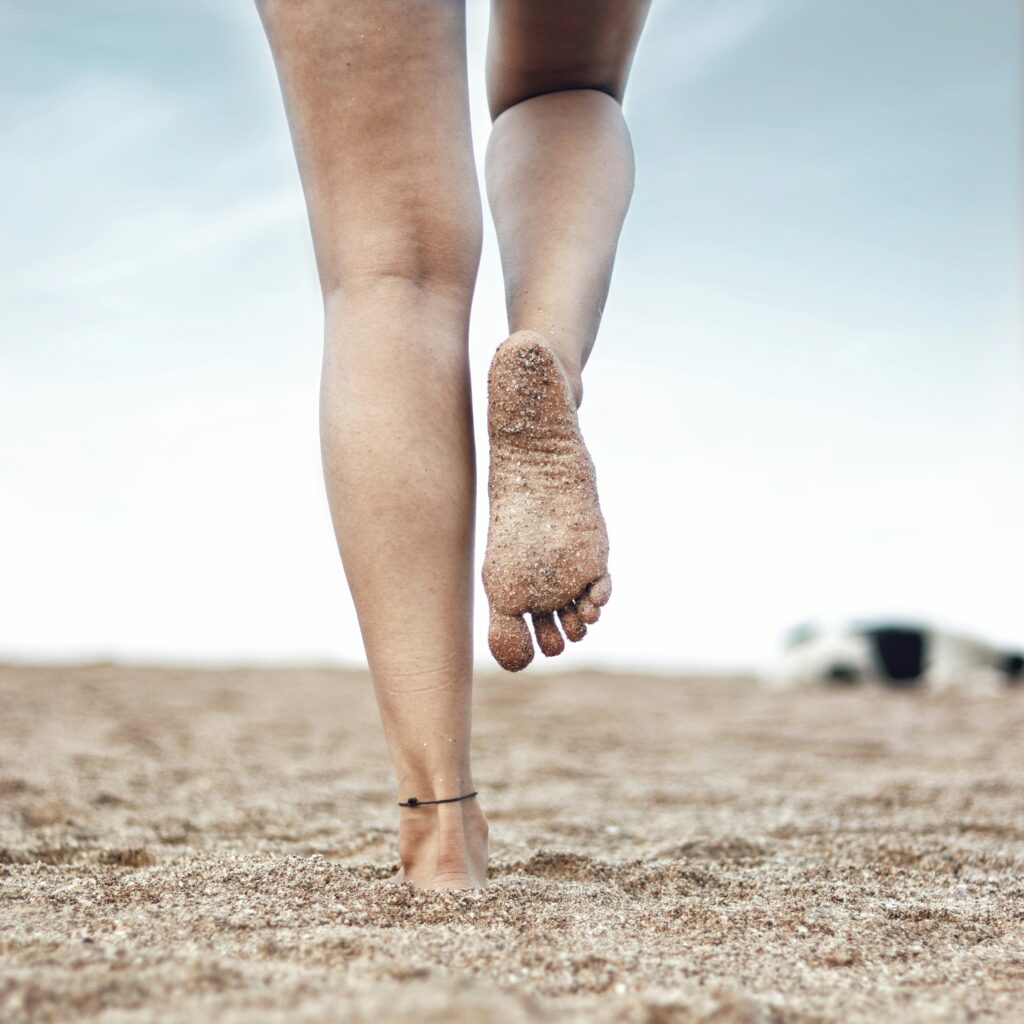What is Plantar Fasciitis?
Are you experiencing pain at the bottom of your heel? Few things in life can completely disrupt normal daily living quite so much as foot pain that keeps you from moving around and doing the things you love.
Plantar fasciitis typically causes a dull ache or a stabbing pain on the bottom of your foot near the heel. This pain is usually the most severe when you take your first few steps in the morning or after you’ve been sitting for a while.
Plantar fasciitis is one of the most common causes of heel pain, and more than 2 million people in the U.S. are treated for it each year. Around 10% of people will experience plantar fasciitis at some point.
The plantar fascia is a band of tissue on the bottom aspect of your foot that runs from the ball of your foot to the heel and connects your heel bone to the base of your toes. You might not think often about this band of tissue, but it plays an important role in foot mechanics. It supports the arch of your foot and absorbs shock when you walk.
Plantar fasciitis can happen when your plantar fascia is inflamed, overused, or stretched too far.

What Are The Symptoms of Plantar Fasciitis?
Symptoms of plantar fasciitis usually affect one foot at a time and can develop gradually or suddenly after intense physical activity. Recognizing the symptoms of plantar fasciitis can help with early intervention and is essential for proper management.
It’s key to keep in mind that each person is different. The duration and severity of symptoms will vary from person to person.
Here are some of the most common symptoms of plantar fasciitis:
- A dull ache or stabbing pain on the bottom of your foot, near the heel.
- Pain, aching, or burning in the arch of your foot.
- Heel discomfort and pain after getting out of bed in the morning or after extended periods of inactivity.
- Heel or foot pain that gets worse after physical activity but is not usually experienced during exercise.
- Tenderness near the heel when touching.
- Stiffness in the foot and heel. This makes climbing stairs particularly difficult.
- Pain is more intense in bare feet or in shoes with minimal support.
- A tight Achilles tendon.
Risk Factors of Plantar Fasciitis
Plantar fasciitis can develop without any obvious cause. However, some factors can increase your risk of developing this condition. These can include:
- Occupations that keep you on your feet. People who spend many hours a day on their feet walking or standing on hard surfaces are at risk of developing plantar fasciitis.
- Age — Plantar fasciitis is most common in individuals between the ages of 40 and 60.
- Obesity — Carrying around extra pounds can lead to the onset of plantar fasciitis.
- Foot Mechanics — High arches, flat feet, and even an atypical gait can affect the way your weight is distributed when you’re standing. This can put added stress on the plantar fascia.
- Wearing shoes like flip flops or flat shoes that don’t support your feet.
- Exercising without warming up or stretching.
- Long-distance running.
- Having a tight Achilles tendon.

Plantar Fasciitis Treatment
There are both conservative and surgical treatment options to help with plantar fasciitis pain. Speak with your podiatrist to discuss what the best option is for you. Conservative treatment is typically a combination of a few different things. It’s usually a combination of stretching, support, and rest to the fascia that will provide the tissue with time to heal.
- Orthotics — Adding inserts into your shoes that offer extra support can help with this condition. Your podiatrist will either suggest a pre-made insert you can buy over the counter or custom-made orthotics that are made specifically for your foot. If you see one of our podiatrists at Western Montana Foot and Ankle, this scan will be done digitally.
- Wearing Supportive Shoes — Don’t walk bare feet. Avoid wearing sandals, flip-flops, or other flat shoes with little to no arch support. Instead, wear well-cushioned, sturdy shoes.
- Stretching & Physical Therapy — There are certain stretches and massage techniques your provider or physical therapist can show you to help your plantar fasciitis pain. They can also help by showing you exercises to strengthen your lower leg muscles, which will help lessen the pressure and workload on your plantar fascia.
- Icing — Icing your foot twice a day for 10 to 15 minutes may help with inflammation.
- Medication — Taking medications like aspirin, ibuprofen, and naproxen, otherwise known as NSAIDs (non-steroidal anti-inflammatory drugs), can help reduce pain and inflammation.
- Rest — Take a break from the activity that has caused your plantar fasciitis pain. This can also sometimes mean wearing a walking boot to hold your foot in place and take pressure off your plantar fascia.
- Local Injections — steroid injections can decrease inflammation. This can be done at your podiatrist’s office.
- Surgery — It’s rare to need surgery, but when conservative treatment methods have failed to alleviate your plantar fasciitis pain, it may become an option. The two most common types of surgery help with plantar fasciitis pain by either lengthening your calf muscle to reduce pressure on your plantar fascia or relieving tension by having tiny incisions made in the plantar fascia.
What Can I Do to Prevent Plantar Fasciitis?
Your plantar fasciitis symptoms should start improving as soon as you start treating them. This can take anywhere from a few weeks to many months, depending on the severity of your condition.
Here are a few things you can do to prevent plantar fasciitis:
- Wear supportive shoes — this also means replacing your sneakers every six to nine months, depending on how much you use them.
- Stretch before and after exercise.
- Don’t walk barefoot on hard surfaces.
- Incorporate low-impact exercises into your routine. Swap out daily running with a rotation of swimming or bicycling instead.
- If you’re overweight, work on losing weight to reduce pressure on your plantar fascia.

See a Podiatrist for Your Plantar Fasciitis Pain
Ignoring plantar fasciitis can lead to chronic heel pain that gets in the way of your regular activities. It can be frustrating to hear you need to take a break from your favorite activities, but it’s important to give yourself time to recover and heal.
If you ignore your symptoms and deal with plantar fasciitis too long, it can lead to gait changes as you try to avoid plantar fasciitis pain. This can lead to foot, knee, hip, or back pain.
Podiatrists have more specialized education and experience with plantar fasciitis and other foot and ankle conditions than any other healthcare professional. If you’re suffering from heel pain get in touch with Western Montana Foot and Ankle today and get scheduled to see one of our podiatrists.
